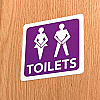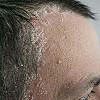Tennis elbow (lateral epicondylitis)
- Reviewed by Howard E. LeWine, MD, Chief Medical Editor, Harvard Health Publishing; Editorial Advisory Board Member, Harvard Health Publishing
What is it?
Tennis elbow (lateral epicondylitis) is inflammation of the fibrous tissue (tendon) that connects muscle to bone in the elbow. It is a form of tendonitis. In tennis elbow, the tendons on the outside of the elbow (the lateral epicondyle) are affected. In golfer's elbow (medial epicondylitis), another form of tendonitis, the tendons on the inside of the elbow are affected. The inflamed tendons may be strained or have tiny tears caused by overusing the muscles that control the wrist and fingers.

Tennis elbow often results from playing tennis and other racquet sports, particularly if the participant is using improper form. However, it is caused more commonly by noncompetitive activities, such as pulling weeds, carrying a suitcase or using a screwdriver, that strain the tendons in the elbow. Sometimes, tennis elbow develops for no apparent reason.
Symptoms
Tennis elbow causes pain, tenderness and sometimes swelling of the elbow and forearm on the affected side. The pain may worsen if the person attempts any activity that stresses the painful tendons, such as lifting heavy objects or even just shaking hands.
Diagnosis
Your doctor will ask about your symptoms, especially whether your elbow or forearm hurts when you move your wrist. Your doctor also will ask about any sports or physical activities that may have triggered your symptoms.
During a physical examination, your doctor will check for pain, tenderness and swelling in the elbow, forearm and wrist on the affected side. If your symptoms are not characteristic of tennis elbow or if you have an unusual history of injury, your doctor may order X-rays or other tests to check for other possible problems. However, no tests are required to make the diagnosis.
Expected duration
The pain of tennis elbow generally subsides within a few weeks, although it sometimes can last for months. Continuing to use the injured muscles can prevent healing and may result in a long-lasting (chronic) condition.
Prevention
If you play racquet sports, use the proper equipment for your size and skill level. You may want to consult a professional to be sure you are using proper equipment and technique. You also can adjust the tension of the strings of your racquet. A sports medicine professional or physical therapist can teach you exercises to strengthen your muscles and increase flexibility to prevent future injury. Also, many specialists suggest using a forearm band placed one to two inches below the elbow to reduce tension on the tendons.
Do not increase the frequency, duration or intensity of any sports activity rapidly. Start slowly, and build slowly. Try to maintain a neutral wrist position (not bent backward or forward). If you feel significant elbow or arm pain, stop immediately and review your symptoms with your doctor.
Treatment
The most important treatment for tennis elbow is rest, because the condition will not improve if the activity that caused it continues. Ice packs and nonsteroidal anti-inflammatory drugs (NSAIDs), such as aspirin, ibuprofen (Advil, Motrin and others) or naproxen (Aleve, Naprosyn and others), may provide some relief from pain. A forearm band or strap wrapped around the forearm just below the elbow may provide significant relief. This rests the inflamed tendon. People with severe pain may have the elbow immobilized in a sling or splinted at a 90-degree angle, although the elbow should not be immobilized for prolonged periods.
Some doctors also recommend an injection of a corticosteroid, such as cortisone, into the area to reduce inflammation and pain. Some patients need physical therapy, including ultrasound therapy and exercises to strengthen the area and increase flexibility. For tennis elbow that continues to cause significant discomfort, a number of other treatments may be recommended, including nitroglycerine patches, acupuncture, and botulinum toxin injections. However, the overall effectiveness of these and other alternatives are uncertain. As a last resort, surgery may be considered.
When to call a professional
Call your doctor if you have pain and your ability to move your wrist or elbow motion has not improved within a week or two. Call even sooner if there is swelling, if the pain began after a significant injury, or if you are unable to use your wrist or elbow.
Prognosis
With proper treatment, symptoms of tennis elbow usually improve within a few weeks. However, in some patients, symptoms persist for several months. If tennis elbow is not properly treated, it can become a chronic condition with frequent flare-ups.
Additional info
National Institute of Arthritis and Musculoskeletal and Skin Diseases
https://www.niams.nih.gov/
About the Reviewer

Howard E. LeWine, MD, Chief Medical Editor, Harvard Health Publishing; Editorial Advisory Board Member, Harvard Health Publishing
Disclaimer:
As a service to our readers, Harvard Health Publishing provides access to our library of archived content. Please note the date of last review or update on all articles.
No content on this site, regardless of date, should ever be used as a substitute for direct medical advice from your doctor or other qualified clinician.












